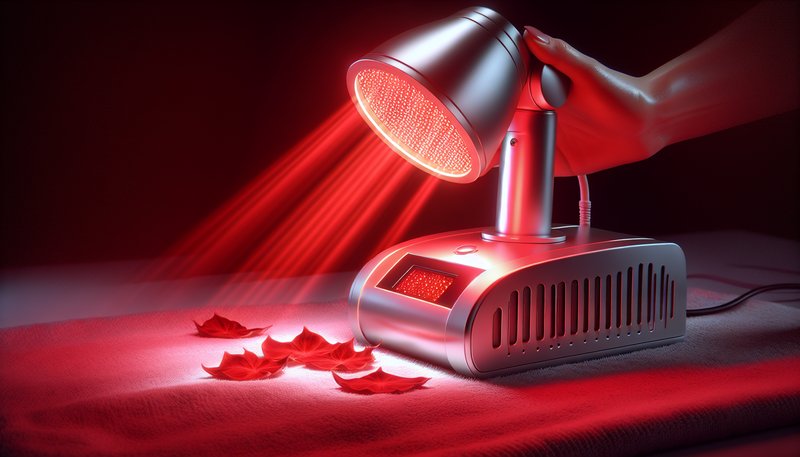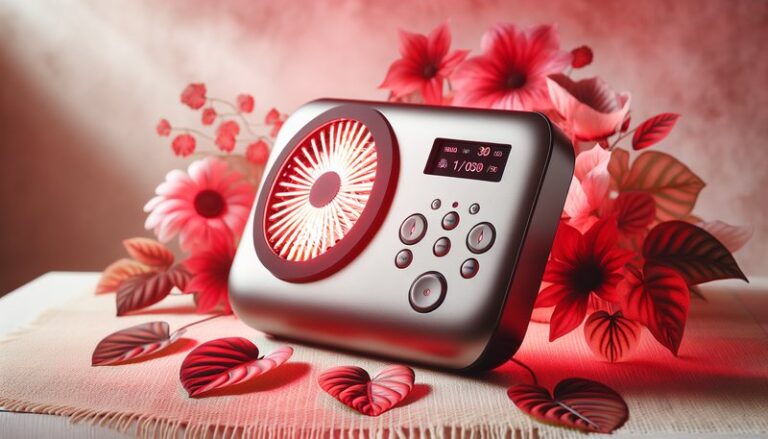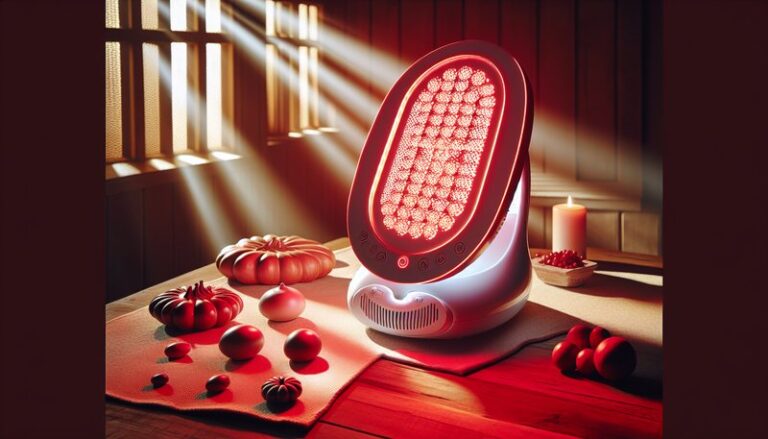What Does Red Light Therapy Do For Skin?
What Does Red Light Therapy Do For Skin?
Have you ever wondered how you can achieve healthier, more youthful-looking skin using non-invasive treatments?
In recent years, red light therapy has gained popularity as a promising technique for skin rejuvenation. This article will explore what red light therapy is, how it works, its benefits for skin health, considerations before use, and alternative treatments available. By the end, you will have a comprehensive understanding of red light therapy and its potential for enhancing your skin’s appearance.
Key Takeaways
- Red light therapy works by penetrating the skin’s layers, promoting healing and rejuvenation.
- Key benefits include improved collagen production, reduced inflammation, and enhanced skin tone and texture.
- Considerations before starting treatment involve skin type, session frequency, and consultation with a professional.
What is Red Light Therapy?
Red light therapy (RLT) is a form of treatment that uses low-level wavelengths of red light to stimulate cellular activity. This therapy is often used in dermatology for its various skin benefits, including reducing wrinkles, scars, and other skin imperfections.
RLT works by activating the mitochondria within the skin cells, which enhances their energy production and promotes healing processes. The therapy can be administered in different settings, including professional clinics, at-home devices, and even in spa treatments.
How Red Light Therapy Works
When applied to the skin, red light penetrates deeply, promoting the production of adenosine triphosphate (ATP), a key energy source for cells. This cellular energy supports regeneration and repair, leading to healthier skin.
What are the Benefits of Red Light Therapy?
Red light therapy offers multiple benefits for skin health that are worth exploring in detail.
Enhanced Collagen Production
One of the standout benefits of RLT is its ability to stimulate collagen synthesis. Collagen is crucial for maintaining skin elasticity and youthfulness. Studies have shown that red light can increase collagen production, resulting in firmer, smoother skin.
Reduction of Inflammation
Red light therapy has anti-inflammatory properties that can help soothe irritated skin. This benefit is particularly useful for individuals with conditions such as acne, rosacea, or eczema, as the therapy aids in reducing redness and swelling.
Improved Skin Tone and Texture
RLT promotes overall skin health, leading to a more even skin tone and smoother texture. Users often report a reduction in fine lines, improved complexion, and a natural glow after treatments.
Accelerated Wound Healing
Red light therapy can enhance the healing of wounds and scars. By boosting cellular activity at the application site, RLT can speed up recovery from various skin injuries, leading to quicker resolution of blemishes.
Boosted Circulation
Increased blood circulation is another advantage of RLT, providing the skin with more oxygen and nutrients, which helps promote a healthy and vibrant appearance.
Is it Possible to Use Red Light Therapy at Home?
Yes, red light therapy can be safely used at home with appropriate devices designed for personal use. Many products are available on the market, ranging from handheld devices to larger panels.
What are the Advantages of At-Home Red Light Therapy?
Utilizing RLT at home comes with several perks.
Convenience and Accessibility
At-home devices provide the freedom to incorporate RLT into your skincare routine without the need for frequent visits to a clinic or spa. You can schedule sessions according to your convenience.
Find out the specifics in Red light therapy wavelength
Cost-Effective
After the initial investment in a device, home therapy can save money over time compared to regular professional treatments.
Privacy
For individuals who prefer privacy when undergoing treatments, home devices offer a personal space for skincare without the presence of strangers.
What are the Disadvantages of At-Home Red Light Therapy?
Although there are benefits, there are also considerations to keep in mind.
Device Quality and Efficacy
Home devices vary significantly in quality and effectiveness. It’s essential to research and choose FDA-approved devices to ensure you receive a beneficial treatment.
Time Commitment
At-home treatments may require more time per session to achieve visible results compared to professional treatments, which can be more concentrated.
Limited Guidance
Without professional supervision, users may not be as informed about the best practices for safe and effective use, which could lead to improper applications.
What are the Things to Consider Before Using Red Light Therapy?
Before embarking on red light therapy, consider the following factors to ensure a safe and effective experience.
Assess Your Skin Type
Different skin types may react differently to RLT. It’s crucial to understand how your skin might respond to ensure positive outcomes.
Consult a Professional
Consider discussing your interest in red light therapy with a dermatologist or skincare professional. They can help tailor treatments to your needs and suggest the appropriate frequency and duration.
Follow Protocols Carefully
Adhering to the recommended distance, duration, and frequency of treatments is vital for safety and effectiveness. Misuse of devices can lead to undesirable results.
Monitor Progress
Keeping track of your skin’s responses will help you determine the efficacy of your treatments. Regularly assess changes in skin texture, tone, and any irritation.
What are the Alternatives to Red Light Therapy?
If red light therapy does not seem suitable for you, there are several alternatives to consider.
Microdermabrasion
This technique involves exfoliating the skin to remove dead skin cells, improving texture and promoting healthy skin regeneration. It can be combined with other treatments for enhanced results.
Chemical Peels
Chemical peels use specialized solutions to remove layers of damaged skin. They can help in correcting uneven tone and texture while encouraging the growth of new skin cells.
Laser Resurfacing
This procedure uses focused beams of light to improve skin imperfections, such as wrinkles and uneven pigmentation. It is more invasive than RLT but can yield significant results.
LED Light Therapy
Similar to RLT, LED therapy utilizes various wavelengths of light to address specific skin concerns. Different colors target different issues, such as blue light for acne and green light for pigmentation.
Conclusion: Is it Recommended to Try Red Light Therapy?
Red light therapy presents numerous benefits for skin health, including enhanced collagen production, reduced inflammation, and improved skin tone. While at-home devices provide convenience and cost savings, it’s crucial to consider the potential disadvantages, such as device quality and proper usage. Consulting with a professional can provide guidance and ensure safe practices. Whether you choose to incorporate RLT into your skincare routine or explore alternative methods, informed decision-making will help you achieve your skincare goals.
Frequently Asked Questions
Can anyone use red light therapy?
Generally, red light therapy is safe for most individuals. However, people with certain skin conditions, sensitive skin, or those taking specific medications should consult a healthcare provider before starting treatment.
How long should each session last?
Treatment times generally range from 10 to 30 minutes, depending on the device and skin condition being targeted. It’s best to follow the manufacturer’s guidelines or professional recommendations.
How often should I undergo red light therapy?
Frequency can vary based on individual skincare needs. Many recommendations suggest starting with 3-5 sessions a week and adjusting based on results and skin sensitivity.
Are there any side effects?
Red light therapy is typically associated with few side effects. However, some users may experience temporary redness or warmth in the treated area. These effects are generally mild and diminish shortly after treatment.
See the full review Red Light Therapy for Weight Loss
Is the effectiveness of red light therapy backed by research?
Yes, several studies support the efficacy of red light therapy in promoting skin health, wound healing, and reducing inflammation. However, results may vary among individuals, and ongoing research is crucial for deeper insights.






